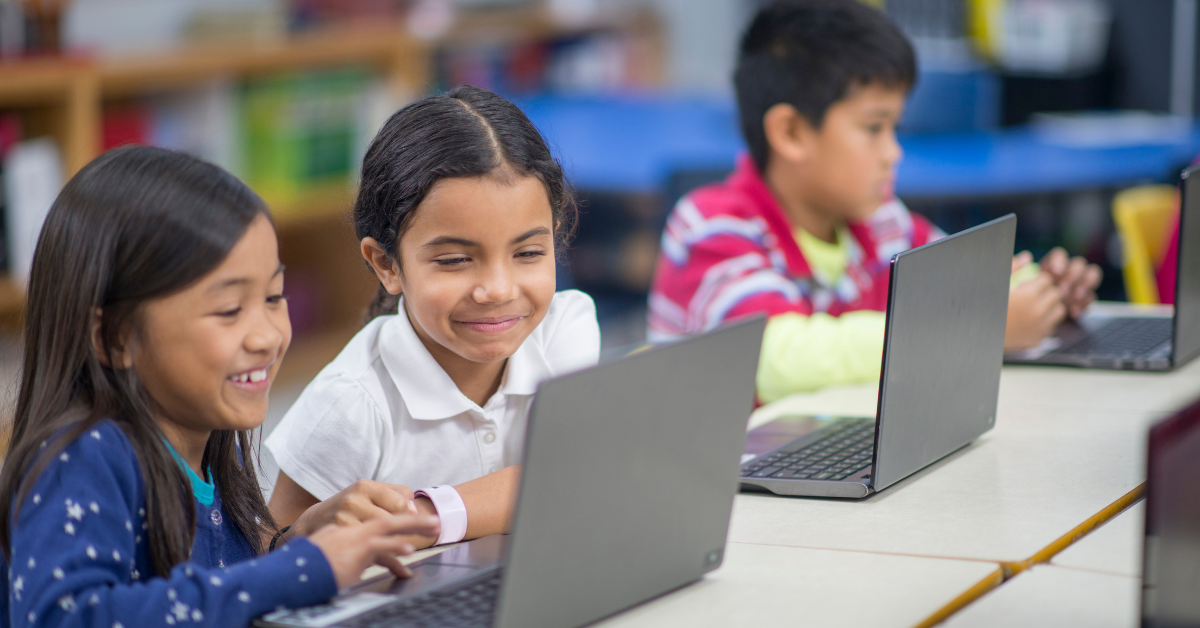
Need to Know
- Adaptive instruction is a process of soliciting student responses, evaluating those responses, and adjusting feedback to target learning needs within a specific context.
- Adaptive intervention is highly specialized to increase supports for those facing challenges in meeting their learning goals.
- Teacher-led adaptive interventions can be effective, but only when we are able to provide students with prompt and differentiated feedback. Optimally, this should occur spontaneously—a tough challenge for any educator.
- In addition to being engaging and interactive, technology-led adaptive instruction can help close the feedback loop. This can minimize lost instructional time and moves students closer to their learning goals.
A Closer Look
Every child's relationship with learning is unique. Kids and teens enter the education space with highly personalized strengths and growth opportunities. As educators, our work centers on identifying and targeting these individual learning needs through instruction. Then, we continually adjust our materials and approaches to best meet students where they are at a given point in time. Sound familiar?
What is adaptive intervention?
We refer to this process of continual reflection and differentiation as adaptive instruction. When we're engaged in this process, we (in partnership with our students) have more control over the pace and style of academic guidance that kids receive.
All students can benefit from adaptive instruction. But, it is instrumental in meeting the needs of learners with perceived barriers to advancement, including
- youth who are working toward on-grade performance;
- students with limited or interrupted formal education (SLIFE); and
- emergent multilinguals, who may benefit from supports that increase access to content instruction.
To meet the needs of specialized learning populations, we're likely to drill down into adaptive instruction even more. It becomes increasingly targeted, more carefully aligned to a student's individual growth goals, and more sensitive to small changes in progress along the way. Now, we're in the territory of adaptive intervention.
Does it work?
Adaptive intervention shows incredible promise for growing students' academic performance capacity (Liu et al., 2017). Studies show that it can increase engagement, boost motivation, improve comprehension, and support broad content-area gains. Meanwhile, it allows for individual learners to work at their own pace on skills that are most relevant to their targeted goal plans (Kurt 2021).
What are the drawbacks?
Educator-led adaptive interventions can have tremendous impact, but they're not without challenges. After all, truly adaptive instruction is a rapid-fire process. It looks like this:
- A student shares a response (say, an answer to a math problem, a verbal text prediction, or even a completed essay).
- The learning guide interprets this response.
- Feedback is delivered (directly or in the form of differentiated support).
And, all of this should occur in a spontaneous loop.
Now, I'm an experienced educator with plenty of instructional time under my belt. But I've never mastered the instantaneous feedback loop. (And I'm not holding my breath for that to happen anytime soon). It's just not a practical expectation—not in a one-on-one student setting, and certainly not in a whole-group dynamic.
So, where do we go from here?
As humans, we may not be super speedy when it comes to adaptive instructional moves. Fortunately, tech is perfectly suited to fill in those gaps. In fact, computer-assisted adaptive interventions can be remarkably effective teaching and learning tools.
Adaptive instructional systems (AIS) are "computer-based systems that guide learning experiences by tailoring instruction and recommendations based on the goals, needs, and preferences of each learner in the context of domain learning objectives" (Sottilare et al., 2018).
AIS relies upon a "prespecified set of decision rules that guide whether, how, or when to offer different intervention options initially and over time” (Almirall & Kasari et al., 2018). The system uses these cues to quickly gather information about which skills a student has mastered—and what areas of skill growth to target. Then, an AIS can engage with a user in a simultaneous feedback loop. This makes it possible for the student to experience intervention programming that is constantly shifting to champion or challenge them.
To illustrate this, let's check in with Liftoff Adaptive Intervention from Education Galaxy. Liftoff supports instruction by targeting specific academic standards in vertical alignment for math and reading. First, the easy-to-implement system gets to work finding a student's learning level through a diagnostics assessment. Then, based on these outcomes, Liftoff creates an individualized learning plan, which is accessible to the user and the teacher.
Learners work toward their learning goals through practice and instruction in a highly engaging learning environment. Meanwhile, Liftoff continually diversifies content and strategies to support real-time student successes. AIS platforms like Liftoff Adaptive Intervention cut down on wasted instructional time and allow students to track goals and progress over time.
Tech-based adaptive interventions can captivate students and hold their learning attention. But, more importantly, they can drive student growth by "reading" the student in live time and differentiating instruction to meet the learner where they are and ultimately moving them closer to their academic goals.


